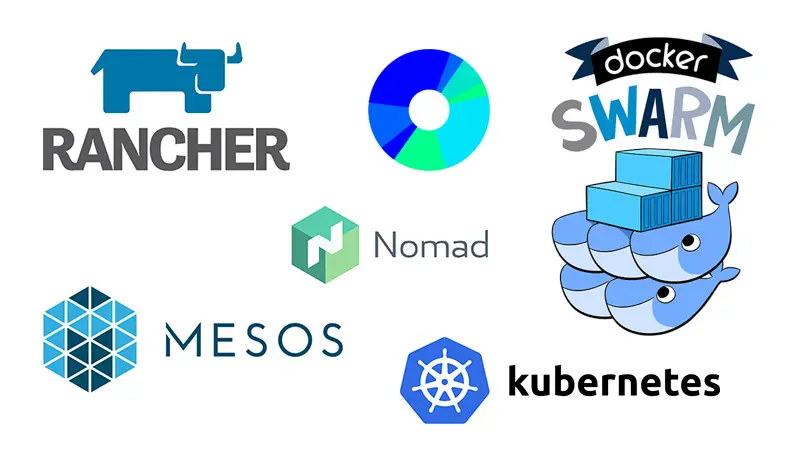What is Container Orchestration and How Does It Work?
Containers have brought a new way on how developers can create and run applications. Through container orchestration, organizations can even handle complex applications. Container orchestration has become a must for companies that deal with microservices.
What is Container Orchestration

Apps in microservice environments make up separate services packed in a container. These containers enable developers to make changes or introduce a feature without disrupting the application. Containers also help in the delivery of continuous development and continuous integration practices and are easily scalable. Containers keep services separate and help them run at the base operating level.
Container orchestration helps developers manage the lifecycle of containers. It helps dedicate the workload of single containers that make up a big, dynamic environment.
How Container Orchestration Helps Organizations
Containers are good for scaling to respond to operational requirements. But environments generally have a huge number of containers working together. Then managing things becomes difficult and complex. In such cases, agencies like Alpacked can implement container orchestration to automate a container’s-
- Availability
- Management
- Networking
- Scaling
- Deployment
You can make more agile and scalable apps with container orchestration tools.
What is an orchestration platform?
It’s a tool or platform that provides a range of resources to orchestrate containers. Alpacked uses a number of adept platforms based on the needs of your company.
Container orchestration allows containerized microservices to work together to create an agile application. The small containers enable developers to deploy changes without creating new software. You can quickly work on a container and introduce a new function.
As a result, you can save time and resources, along with enjoying greater flexibility.
Containers are a part of the rest of the architecture. They depend on the same kernel and capabilities of an operating system.
How Does Container Orchestration Work?

Let’s first see what containers are and what they do. Containers can automate repetitive tasks that run in the background. They support a microservice architecture by acting together as a single unit made of several containers. Containers can also help in migrating apps and develop native apps. Ultimately, containers are a great resource for DevOps practices to run continuous development and integrations.
Now let’s come to container orchestration.
You will find many industry container orchestration tools in the market, like Kubernetes. Developers use the industry container orchestration tools to configure apps. Various container orchestration platforms use different formats like JSON or YAML to communicate.
The orchestration tool now acts on the commands of the configuration file to do a series of tasks-
- Gathering container images
- Establishing networking between containers
- Storing logs
- Moving containers to required environments
- Spread load evenly by removing or scaling containers
- Monitoring the health of containers and services
Groups of replicated containers can find hosts automatically. They do this by gauging resources like CPU memory. Developers do version control and branching of the configuration files. So, they can deploy similar applications in a range of environments.
The containers orchestrated by the developers help manage the container once it’s running on the host. The team is responsible for creating instructions to manage the container. Container orchestration tools are really versatile and work well in environments using microservices. You can even run them on the cloud and on-premise infrastructures.
Benefits of Container Orchestration
Productivity Boost
Container orchestration makes installation simple. You can also use a configuration file to reduce work and even dependency errors. Plus, you create new features easily.
Easy Deployments
You can quickly create and deploy containerized apps using user-friendly orchestration tools. The new change takes effect immediately without disrupting traffic.
Improved Security
Containers come with limited information. You can share resources with team members on a need basis in a safe manner. Additionally, if things go wrong, containers make risks very less as they are disparate systems.
Scale Quickly
Containers are the best way to scale your application without stopping your operations. You can give a single command to scale your applications. It’s also possible to scale specific features at one time.
What Container Orchestration Tool Should You Use

The two most popular container orchestration tools are Kubernetes and Docker Swarm. Both tools are great and have their pros and cons. You should consider a range of factors to choose the right tool, like-
- Your own environment
- Learning curve
- Flexibility
- Budget
- Cloud or on-premise
- Customer support
Now you can even get orchestration tools on a subscription basis. For instance, Kubernetes is now available from Microsoft and Google cloud. However, small businesses with limited scaling can go for Docker Swarm.
You need to be able to understand the perks and drawbacks of each tool. Your own architecture will also decide what will be best for you. Additionally, consider the expertise of your IT team and the containers you have.
Alpacked can help you pick the right tool for unleashing DevOps practices. We are also experts in container orchestration and know what works best for your unique business needs. Get in touch with us today to discuss your project. We can guide you on the right path and offer our expertise for your organization to make big.
Contact us today.





